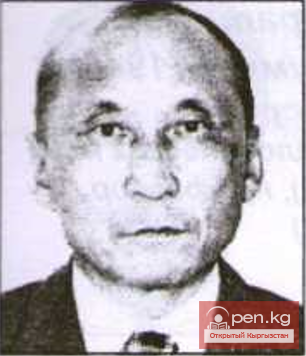
The talented illustrator of the Kyrgyz book was Belek Jumabaev, who possessed a unique perception of life and art, with a light, artistic drawing style. After familiarizing himself with various graphic techniques, he focused on drawing and zincography, in which he created his main works in book graphics. He quickly mastered the culture of book design, but saw his main task in the imagery of the illustrations, in their harmony with the idea and style of the literary work. He illustrated the books "Farhad and Shirin" by A. Navoi (1962), "The Last Cartridge" by N. Baytemirov (1963), "Temir" by T. Sydykbekov (1965), "Red Apple" (1965), each time finding fresh compositional and plastic solutions for different cycles, usually combining a high degree of abstraction in form with vivid life impressions, sharp observations of characters, situations, and nature motifs. For example, in the illustrations for the book "Selected Works" by Sh. Termechikov, there is "almost a line that outlines the contours of figures and objects — bold and diverse, and how much knowledge of life, everyday signs in costumes, household items, and animal behavior lies behind it. The illustrations are bright, well-composed on the book page, and evoke a kind smile from the reader, which harmonizes with the character of the text."
Jumabaev succeeded in children's books ("Bunch of Grapes," 1967, ink, pen, "Mektep," Diploma of 1st degree at the VII inter-republican competition in Almaty; "Melon Grown on a Horse's Back," 1968, pen, ink, "Mektep") — witty, elegant, sparkling with kind humor.
Among the best works of book graphics in Kyrgyzstan are Jumabaev's drawings for the book "Before Dawn" by A. Tokombaev (1967), distinguished by the expressive imagery of the graphic language, which corresponds to the character of A. Tokombaev's literary narrative. With a sharp line and brittle expressive stroke, the artist outlines generalized figures of the heroes, masterfully and boldly composing dramatic mass scenes that convince with their pointed imagery.
One of the first, Jumabaev turned to illustrating Kyrgyz epic tales, which provided great scope for his creative improvisations, earning him success.














































